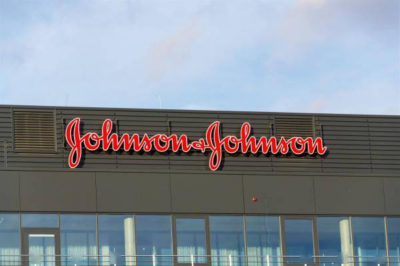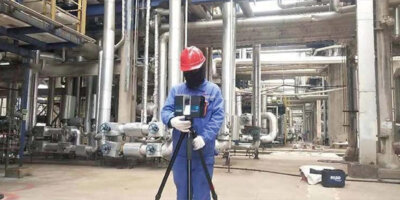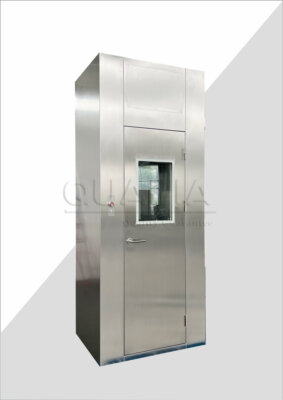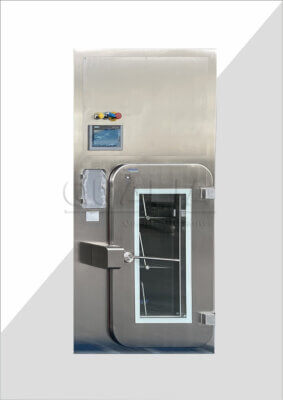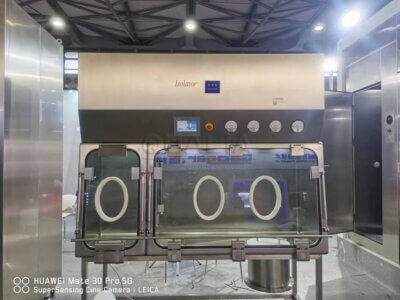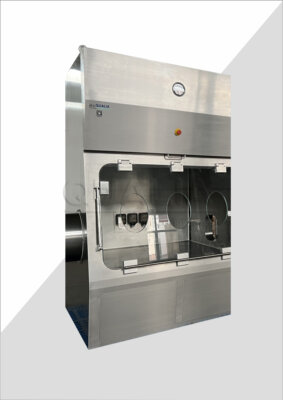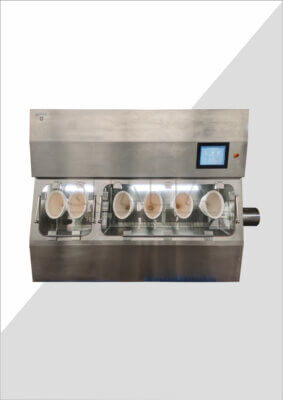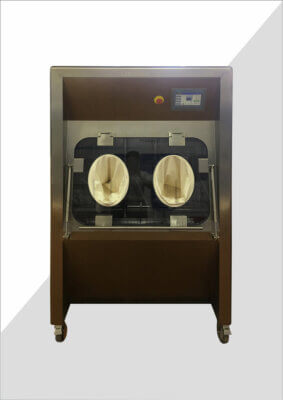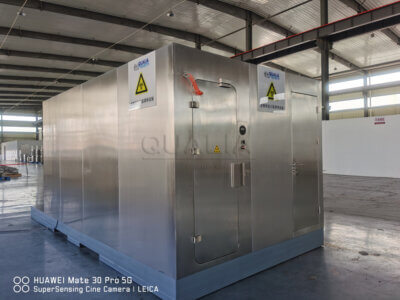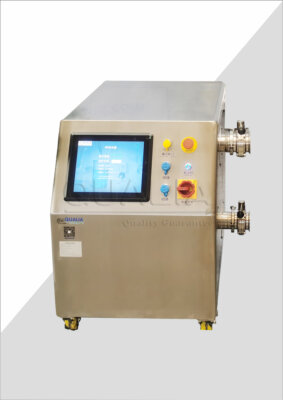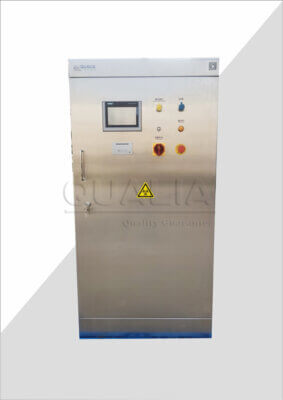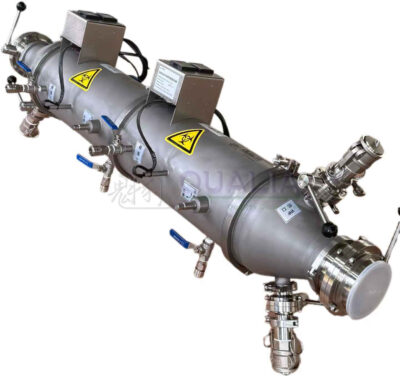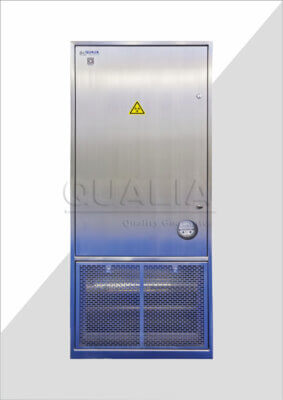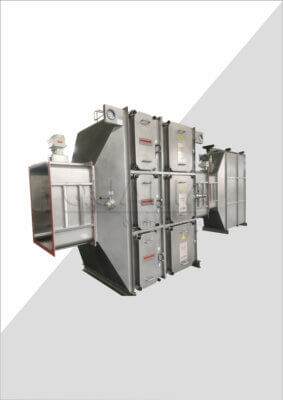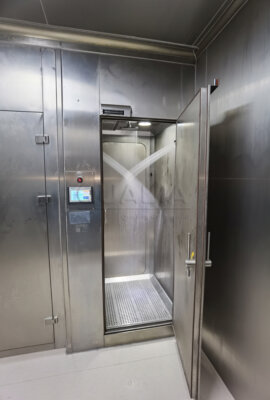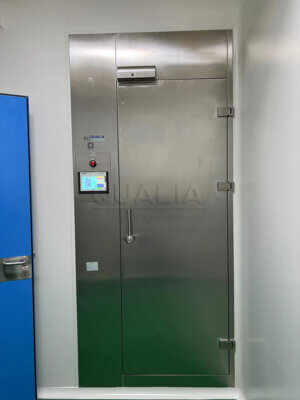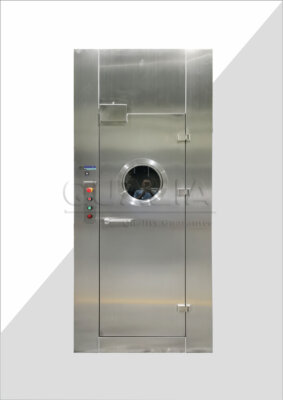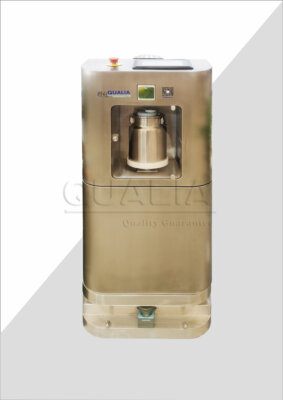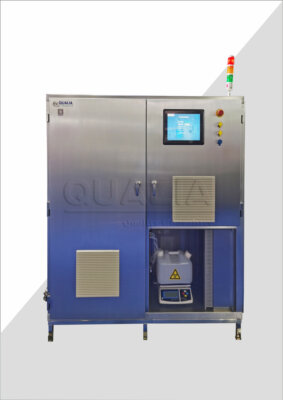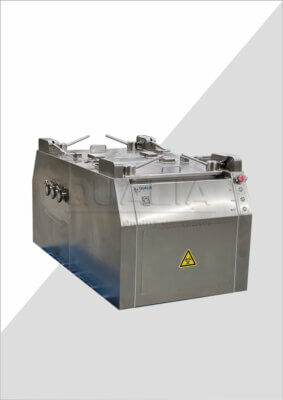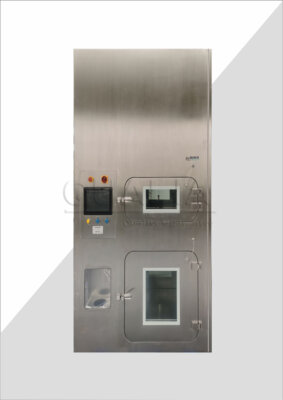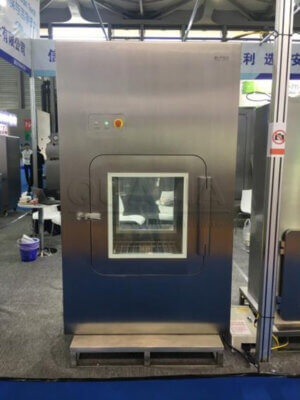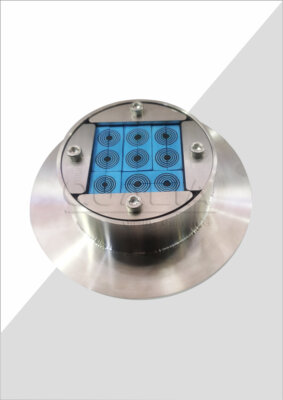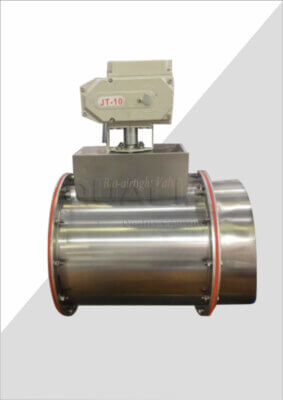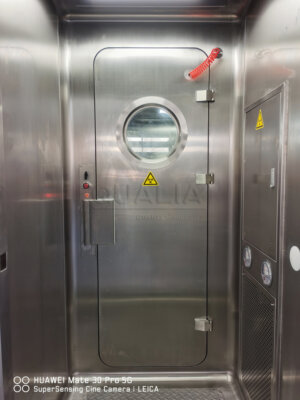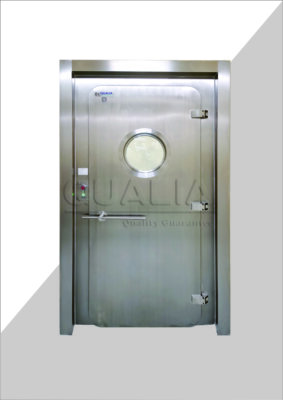In today’s high-stakes industrial environments, maintaining precise environmental controls isn’t just about efficiency—it’s about protecting lives, preserving product integrity, and meeting stringent regulatory standards. APR door sealing technology has emerged as a critical solution for facilities requiring absolute containment, yet many decision-makers struggle with understanding which sealing systems best meet their specific operational demands.
The consequences of inadequate door sealing can be catastrophic: contamination breaches in pharmaceutical manufacturing can result in millions of dollars in lost product and regulatory penalties, while improper containment in chemical processing facilities poses serious safety risks to personnel. Even minor seal failures can compromise years of research and development investments.
This comprehensive guide examines APR sealing technology fundamentals, compares different system types, and provides actionable insights for selecting the optimal solution. You’ll discover how leading manufacturers like QUALIA Bio-Tech are advancing containment technology and learn practical strategies for implementing these systems in your facility.
What is APR Door Sealing Technology?
APR (Automatic Pressure Relief) door sealing represents a sophisticated approach to environmental containment that automatically adjusts to pressure differentials while maintaining complete barrier integrity. Unlike static sealing methods, APR sealing technology continuously monitors and responds to environmental changes, ensuring consistent performance across varying operational conditions.
Core Technology Components
The foundation of APR door sealing systems consists of three primary elements: pressure-responsive sealing mechanisms, automated control systems, and integrated monitoring capabilities. The pressure-responsive component utilizes advanced elastomeric materials that expand or contract based on differential pressure readings, creating an adaptive seal that maintains effectiveness regardless of environmental fluctuations.
Modern APR systems incorporate microprocessor-controlled monitoring that tracks seal performance in real-time. According to recent industry data, these automated systems reduce containment failures by up to 94% compared to manual sealing methods, while decreasing response times to pressure variations from minutes to milliseconds.
The integration capabilities of contemporary APR technology allow seamless connection with facility management systems, providing comprehensive data logging and predictive maintenance alerts. This connectivity enables facility managers to optimize performance proactively rather than reactively addressing seal failures.
How APR Sealing Systems Work
APR door sealing operates through a continuous feedback loop between pressure sensors, control algorithms, and mechanical actuators. When pressure differentials exceed predetermined thresholds, the system automatically adjusts seal compression to maintain barrier integrity while preventing damage from excessive force.
The operational sequence begins with differential pressure detection through strategically positioned sensors. These sensors communicate with central control units that process readings against established parameters, triggering appropriate mechanical responses within 0.2 seconds of detection. This rapid response capability proves essential in applications where even brief containment lapses can have serious consequences.
| Component | Response Time | Accuracy Range | Maintenance Interval |
|---|---|---|---|
| Pressure Sensors | 0.1 seconds | ±0.1% | 12 months |
| Control Units | 0.2 seconds | ±0.05% | 18 months |
| Mechanical Actuators | 0.5 seconds | ±2% | 6 months |
What are the Main Types of APR Door Sealing Systems?
The landscape of APR door sealing encompasses several distinct system architectures, each optimized for specific operational requirements and environmental conditions. Understanding these variations enables informed decision-making when specifying containment solutions for particular applications.
Mechanical Seal Configurations
Mechanical seal applications in APR systems primarily utilize either inflatable gasket designs or compression-based sealing mechanisms. Inflatable gasket systems employ pneumatically controlled bladders that expand to create hermetic seals, offering superior conformability to irregular surfaces and maintaining effectiveness despite minor door warpage or misalignment.
Compression-based mechanical seals rely on precisely controlled pressure applied to high-performance elastomeric materials. These systems excel in applications requiring frequent door operation, as they minimize wear while maintaining consistent sealing pressure. Industry testing demonstrates that compression-based systems can withstand over 100,000 operation cycles while maintaining seal integrity within ±5% of original specifications.
The selection between inflatable and compression systems often depends on operational frequency and pressure requirements. Inflatable systems typically handle higher pressure differentials (up to 15 PSI), while compression systems offer greater durability for high-frequency applications.
Pneumatic vs. Hydraulic Systems
Pneumatic APR systems utilize compressed air to operate sealing mechanisms, offering rapid response times and clean operation ideal for pharmaceutical and food processing environments. These systems typically operate at pressures between 80-120 PSI and can achieve full seal engagement within 2-3 seconds of activation.
Hydraulic systems provide significantly higher force capabilities, making them suitable for large door installations or extreme pressure differential applications. While hydraulic systems operate more slowly than pneumatic alternatives, they offer superior holding force and precise position control. Recent developments in hydraulic APR technology have reduced response times to under 8 seconds while maintaining force advantages.
“The choice between pneumatic and hydraulic systems ultimately depends on your specific force requirements and operational environment,” notes Dr. Sarah Chen, containment systems specialist at Industrial Sealing Solutions. “Pneumatic systems excel in clean environments requiring rapid cycling, while hydraulic systems prove essential for high-force applications.”
How Does APR Sealing Technology Compare to Traditional Methods?
Traditional door sealing methods, including manual compression seals and passive gasket systems, lack the dynamic response capabilities that characterize modern APR technology. This fundamental difference translates into measurable performance advantages across multiple operational parameters.
Performance Metrics Analysis
Comparative analysis reveals that APR sealing systems achieve containment effectiveness rates of 99.8% or higher, compared to 92-96% for traditional manual systems. This improvement stems from APR technology’s ability to maintain optimal seal compression regardless of temperature variations, door movement, or pressure fluctuations that commonly compromise static sealing systems.
Energy efficiency represents another significant advantage, with APR systems consuming 35-40% less power than continuously pressurized traditional systems. This efficiency gain results from intelligent pressure management that applies sealing force only when required, rather than maintaining constant maximum pressure.
The following comparison illustrates key performance differentials:
| Performance Factor | APR Technology | Traditional Methods | Improvement |
|---|---|---|---|
| Containment Effectiveness | 99.8% | 94.2% | +5.6% |
| Energy Consumption | 100W average | 165W average | -39% |
| Maintenance Frequency | Every 18 months | Every 6 months | -67% |
| Response to Pressure Changes | 0.5 seconds | Manual intervention | Automated |
Cost-Benefit Considerations
While APR sealing systems require higher initial capital investment—typically 2.5-3.5 times the cost of traditional systems—the total cost of ownership often favors APR technology over 5-7 year operational periods. This economic advantage stems from reduced maintenance requirements, improved energy efficiency, and decreased contamination incidents.
In our experience working with pharmaceutical manufacturers, facilities implementing advanced mechanical seal APR doors report average annual savings of $125,000-$280,000 in reduced contamination events and regulatory compliance costs. However, these savings assume proper system sizing and installation, as undersized systems can actually increase operational costs through frequent cycling and premature component wear.
It’s worth noting that APR systems require specialized technical expertise for installation and maintenance, potentially increasing labor costs in facilities lacking appropriate technical staff. This consideration particularly affects smaller operations where the expertise investment may not justify the performance benefits.
What Industries Benefit Most from APR Door Technology?
The sophisticated capabilities of APR door sealing technology prove most valuable in industries where environmental control directly impacts product quality, safety, or regulatory compliance. These applications typically involve hazardous materials, sterile manufacturing processes, or sensitive research activities.
Pharmaceutical and Biotechnology Applications
Pharmaceutical manufacturing represents the largest application segment for APR door sealing, driven by FDA validation requirements and the critical nature of sterile processing environments. Door sealing types used in pharmaceutical applications must meet USP 797 cleanroom standards while providing documented performance validation.
A recent case study from a major vaccine manufacturer demonstrated APR technology’s impact on production efficiency. After installing APR sealing systems across 12 critical processing rooms, the facility achieved a 67% reduction in environmental excursions and eliminated contamination events during a 24-month evaluation period. The improved containment enabled the facility to reduce buffer zones between processing areas, increasing usable manufacturing space by 15%.
Biotechnology research facilities present unique challenges due to varying containment requirements across different research protocols. APR systems’ programmable pressure profiles enable the same door installation to support multiple containment levels without physical modifications, providing operational flexibility that static systems cannot match.
Industrial and Manufacturing Uses
Chemical processing facilities increasingly adopt APR sealing technology for managing volatile organic compounds and hazardous materials. The automatic pressure relief functionality prevents dangerous over-pressurization while maintaining necessary containment, addressing safety concerns that traditional sealing methods cannot adequately manage.
Manufacturing environments benefit from APR technology’s reduced maintenance requirements and operational reliability. A automotive paint facility in Michigan reported 89% fewer door seal replacements after switching to APR systems, while maintaining superior containment of volatile paint compounds. The facility’s maintenance director noted that predictive maintenance capabilities enabled scheduling seal servicing during planned downtime rather than responding to emergency failures.
“APR sealing technology has fundamentally changed how we approach containment in our chemical processing operations,” explains Mark Rodriguez, safety director at Petrochem Industries. “The automated response to pressure variations has eliminated the human error factor that previously caused 60% of our containment incidents.”
What Challenges Should You Consider with APR Sealing Systems?
Despite their significant advantages, APR door sealing systems present implementation challenges that require careful consideration during the specification and installation process. Understanding these limitations enables realistic project planning and appropriate system selection.
Installation and Maintenance Requirements
APR systems require precise installation tolerances and specialized commissioning procedures that exceed the complexity of traditional door sealing methods. Door frame modifications often necessitate structural reinforcement to accommodate the additional mechanical components and control systems, potentially requiring significant facility downtime during installation.
The technical expertise required for APR system maintenance presents ongoing operational considerations. While these systems require less frequent maintenance than traditional alternatives, the specialized nature of repairs typically requires manufacturer-certified technicians or extensive staff training investments. Facilities lacking internal technical capabilities should factor service contract costs into total ownership calculations.
Power requirements for APR systems also exceed traditional passive sealing methods, requiring dedicated electrical circuits and backup power considerations for mission-critical applications. Emergency procedures must address scenarios where power failures could compromise containment, necessitating failsafe mechanisms that add system complexity.
Environmental Limitations
Temperature extremes can affect APR system performance, particularly in applications involving frequent thermal cycling or exposure to temperatures outside the -20°C to +80°C operational range typical for standard systems. Specialized components for extreme temperature applications significantly increase system costs and complexity.
Chemical compatibility represents another crucial consideration, as certain aggressive chemicals can degrade sealing materials or corrode control components. While material compatibility testing addresses most concerns, facilities handling exotic chemicals may require custom material specifications that increase procurement lead times and costs.
| Environmental Factor | Standard Limits | Extended Range Options | Cost Impact |
|---|---|---|---|
| Temperature Range | -20°C to +80°C | -40°C to +150°C | +45% |
| Chemical Compatibility | pH 4-10 | pH 1-14 | +25% |
| Pressure Differential | 15 PSI | 50 PSI | +60% |
How to Select the Right APR Door Sealing Solution?
Selecting optimal APR sealing technology requires systematic evaluation of operational requirements, facility constraints, and performance objectives. This selection process should prioritize long-term operational needs rather than minimizing initial investment costs.
Performance Requirements Assessment
Begin by establishing precise containment requirements, including required pressure differentials, acceptable leakage rates, and operational cycling frequency. These specifications directly influence system sizing and component selection, with under-specification leading to premature failure and over-specification unnecessarily increasing costs.
Regulatory compliance requirements significantly impact system selection, particularly in pharmaceutical and food processing applications where validation documentation must demonstrate consistent performance. FDA-validated systems typically carry premium pricing but provide necessary documentation and support for regulatory submissions.
Consider future operational changes when specifying system capabilities. APR systems’ programmable nature enables accommodation of evolving requirements without hardware modifications, but initial specifications must include sufficient capability margins to support anticipated changes.
Integration Considerations
Facility management system integration capabilities should align with existing infrastructure and planned technology upgrades. Modern APR door technology solutions typically support multiple communication protocols, but compatibility verification prevents costly integration challenges during installation.
Physical integration requirements include adequate space for control panels, compressed air supply systems, and electrical connections. Retrofit installations often require creative solutions for routing utilities to door locations, potentially impacting system configuration options.
In our experience, successful APR implementations require collaboration between facility engineering, operations, and maintenance teams throughout the selection process. This collaborative approach ensures that selected systems support operational workflows while meeting maintenance capabilities and budget constraints.
Conclusion
APR door sealing technology represents a significant advancement in environmental containment capabilities, offering automated pressure management, superior containment effectiveness, and reduced operational costs compared to traditional sealing methods. The 99.8% containment effectiveness and 39% energy reduction achieved by modern APR systems demonstrate clear performance advantages for applications requiring precise environmental control.
Key insights from this analysis include the importance of matching system capabilities to specific operational requirements, understanding maintenance complexity, and evaluating total cost of ownership rather than initial investment costs. The technology proves most valuable in pharmaceutical, biotechnology, and chemical processing applications where containment failures carry significant consequences.
Looking forward, integration with IoT platforms and predictive analytics will further enhance APR door sealing system capabilities, enabling proactive maintenance scheduling and optimized performance management. Emerging applications in green energy production and advanced manufacturing suggest continued growth in APR technology adoption.
For facilities considering APR sealing implementation, begin with thorough requirements assessment and engage experienced suppliers who provide comprehensive support throughout the selection, installation, and operational phases. The investment in proper system specification and installation pays dividends through years of reliable, automated containment performance.
What specific containment challenges does your facility face that might benefit from APR sealing technology? Consider consulting with containment specialists to explore how advanced APR door sealing systems can address your unique operational requirements while providing long-term value through improved performance and reduced maintenance demands.
Frequently Asked Questions
Q: What is APR door sealing technology?
A: APR door sealing technology refers to advanced door systems designed to provide airtight containment in environments where controlling air leakage and contamination is critical. The term “APR” stands for “Airtight Pressure Resistant,” highlighting the system’s ability to maintain strict pressure differentials and prevent the passage of particles, gases, or contaminants. These doors are commonly used in pharmaceutical laboratories, biotech research facilities, and cleanrooms, where even minor breaches can compromise safety and regulatory compliance.
Q: What are the main types of APR door seals?
A: There are two primary types of APR door seals:
- Pneumatic (Inflatable) Seals: These use compressed air to inflate a flexible gasket around the door perimeter, creating an instant, high-integrity seal. Pneumatic seals are ideal for high-traffic areas and environments with frequent equipment movement, as they provide a flush threshold and eliminate trip hazards.
- Mechanical Seals: These rely on a robust, flexible gasket that is manually or automatically compressed against the door frame. Mechanical seals are often used in lower-traffic settings where a fail-safe, power-independent seal is preferred.
Both types are available in various materials—such as stainless steel, aluminum, and phenolic resin—to suit different environmental and chemical resistance needs.
Q: Where is APR door sealing technology most commonly applied?
A: APR door sealing technology is most commonly applied in industries that demand rigorous environmental control and contamination prevention. Key applications include:
- Pharmaceutical manufacturing: Ensuring compliance with Good Manufacturing Practices (GMP) and preventing cross-contamination between production zones.
- Biotechnology and biosafety laboratories: Maintaining containment integrity between different biosafety levels (BSL-3, BSL-4) and during hazardous material handling.
- Semiconductor fabrication and cleanrooms: Preserving ultra-low particle counts despite frequent personnel and equipment movement.
- Hospitals and specialized research facilities: Providing airtight separation in areas requiring sterile or containment-controlled environments.
Q: How does APR door sealing technology enhance safety and efficiency?
A: APR door sealing technology enhances both safety and operational efficiency by:
- Preventing contamination: Airtight seals block the entry of contaminants, protecting sensitive processes and products.
- Maintaining pressure differentials: These systems ensure stable environmental conditions, crucial for research, manufacturing, and safety protocols.
- Supporting high traffic flow: Pneumatic seals, in particular, allow for seamless movement of personnel and equipment without compromising containment.
- Reducing breach incidents: Advanced systems have been shown to significantly decrease containment breaches, improving both safety outcomes and workflow efficiency.
Q: What should I consider when choosing between pneumatic and mechanical APR door seals?
A: When selecting between pneumatic and mechanical APR door seals, consider the following factors:
- Traffic levels: Pneumatic seals are better suited for high-traffic areas with wheeled equipment, while mechanical seals may suffice for lower-traffic environments.
- Power requirements: Pneumatic systems require a compressed air supply, whereas mechanical systems offer a failsafe option during power outages.
- Floor design: Pneumatic doors provide a flush threshold, reducing trip hazards; mechanical doors often have a raised threshold.
- Containment needs: Both types deliver high containment, but pneumatic seals typically offer faster, more consistent sealing performance.
Q: Can APR door sealing systems be customized for specific facility needs?
A: Yes, APR door sealing systems are highly customizable to meet the unique demands of different facilities. Options include:
- Material selection: Doors and frames can be constructed from stainless steel, aluminum, phenolic resin, or powder-coated steel for chemical resistance, durability, and aesthetics.
- Integration with existing infrastructure: Systems can be installed in various wall types, including concrete, block, and stud partitions.
- Additional features: Options such as escape panels, glass vision panels, and specialized finishes are available to enhance functionality and safety.
Customization ensures that APR door sealing technology can be tailored to the specific containment, operational, and regulatory requirements of your facility.
External Resources
- Understanding Pneumatic APR Door Seal Technology – BioSafe – This article provides an in-depth look at pneumatic APR door sealing technology, covering its structure, sealing methods, and key applications in pharmaceuticals, biotechnology, cleanrooms, and laboratories.
- Pneumatic Seal APR Doors – Presray – An overview of pneumatic seal APR doors, focusing on their airtight containment properties, use cases, materials, and suitability for high-containment and high-traffic environments such as laboratories and clean rooms.
- High Containment APR Inflatable Seal Doors – PBSC Ltd – Details the construction and application of APR pneumatic inflatable seal doors, particularly for airtight containment in healthcare, laboratory, and cleanroom settings.
- APR Mechanical Seal Door – PBSC Ltd – Explains mechanical APR door sealing technology, design features, applications, and differences from pneumatic systems, suited for high-containment environments.
- APR Doors with Airtight Mechanical Seals – Presray – Describes APR doors utilizing mechanical seal technology, including operational concepts and their use in BSL3 and BSL4 laboratory environments.
- Cleanroom Doors and Air Pressure Relief Systems Overview – Reviews various door sealing types, including APR technology, in high-containment and cleanroom environments, outlining their specific benefits and integration into modern laboratory systems.
Related Contents:
- What Are APR Door Pneumatic Seals and How They Work
- Understanding Pneumatic APR Door Seal Technology
- Pneumatic Seal APR Doors: Complete Guide to Industrial Applications
- APR Door Sealing Systems | Pneumatic Technology Overview
- Manufacturing APR Door Seal Systems | Industrial Applications
- Food Industry APR Door Sealing | Sanitary Design | Compliance
- Industrial APR Door Seals | Purchase Guide | Specification Comparison
- Pneumatic APR Door Seal Performance Metrics | Technical Specifications
- Laboratory APR Door Pneumatic Seals | Containment Solutions

